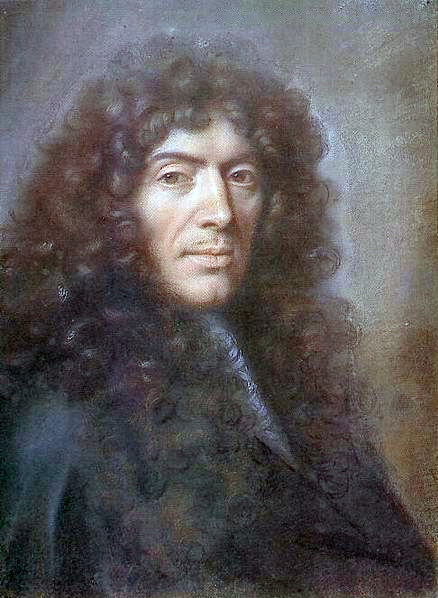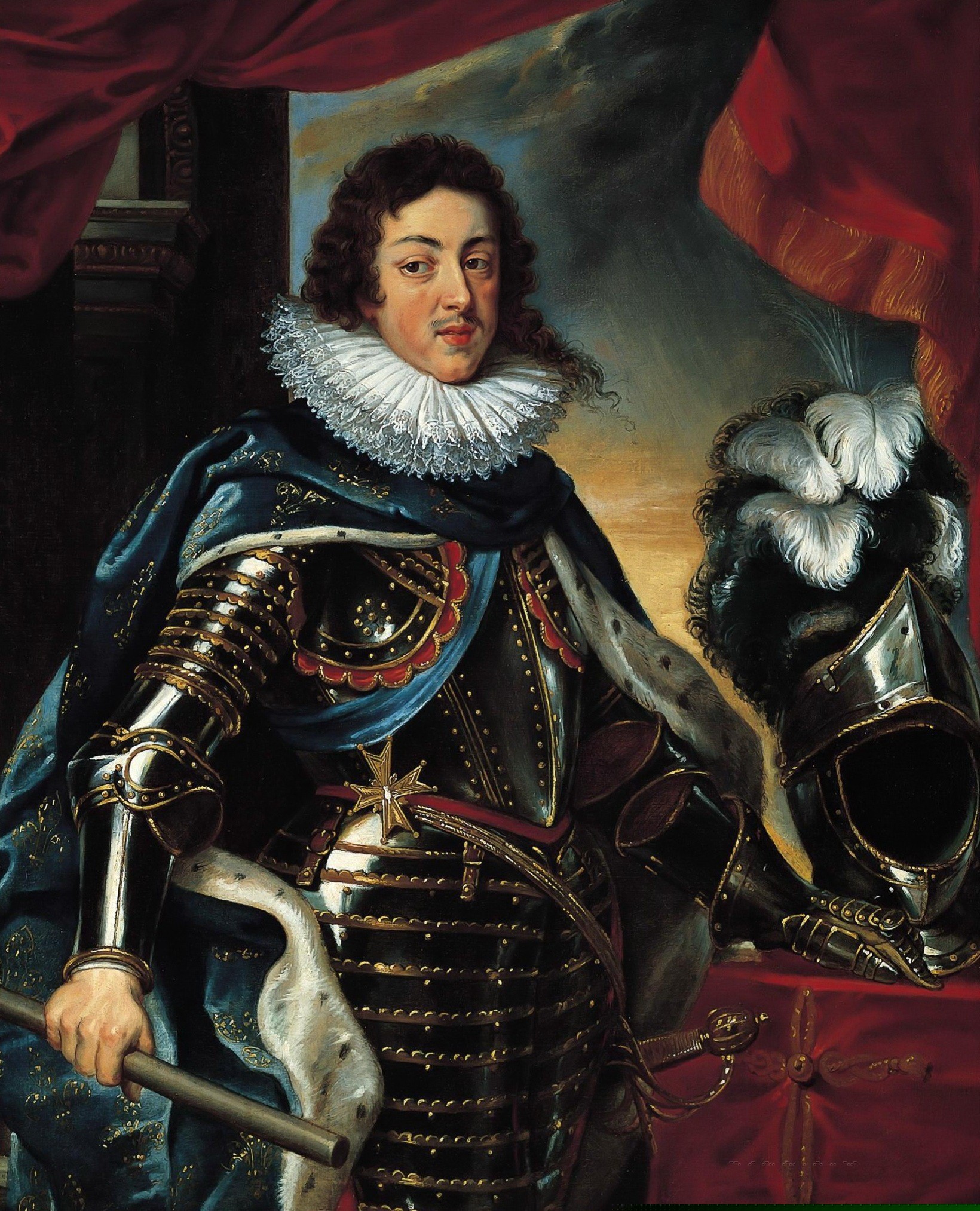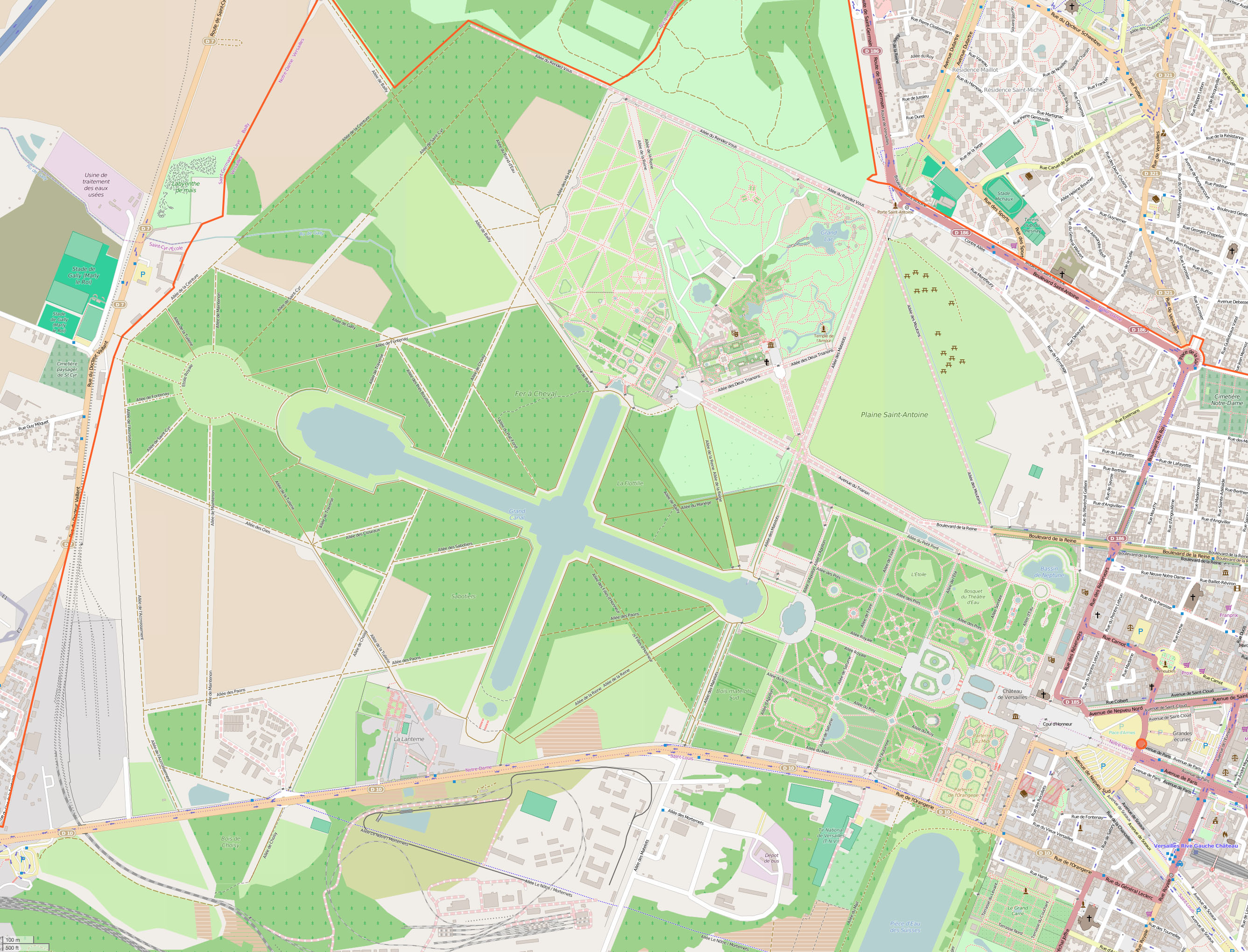|
Château De Rueil
The Château de Rueil (formerly spelled Ruel, also referred to as the Château du Val de Ruel) was a 17th-century French château located in Rueil-Malmaison. It was especially famous for its gardens, created before those of Vaux-le-Vicomte and Versailles, and was the preferred residence of Cardinal Richelieu from at least 1633 (when he purchased it) until his death in 1642. History The origins of the château are obscure, but it was probably initially constructed in the 1560s and purchased in 1606 by a courtier of Henri IV of France, Jean de Moisset, who added to the château and acquired additional land for the expansion of the gardens. The property was bought in 1633 by Cardinal Richelieu, who had the architect Jacques Lemercier remodel and enlarge the château, as well as the gardens and grounds. The château and grounds were renovated again in 1750 by Philippe Dullin de La Ponneraye. During the reign of Louis-Philippe, the buildings were demolished, and the estate was subdiv ... [...More Info...] [...Related Items...] OR: [Wikipedia] [Google] [Baidu] |
French Renaissance Architecture
French Renaissance architecture is a style which was prominent between the late 15th and early 17th centuries in the Kingdom of France. It succeeded French Gothic architecture. The style was originally imported from Italy after the Hundred Years' War by the French kings Charles VII, Louis XI, Charles VIII, Louis XII and François I. Several notable royal châteaux in this style were built in the Loire Valley, notably the Château de Montsoreau, the Château de Langeais, the Château d'Amboise, the Château de Blois, the Château de Gaillon and the Château de Chambord, as well as, closer to Paris, the Château de Fontainebleau. This style of French architecture had two distinct periods. During the first period, between about 1491 and 1540, the Italian style was copied directly, often by Italian architects and craftsmen. In the second period, between 1540 and the end of the Valois dynasty in 1589, French architects and craftsmen gave the style a more distinctive and or ... [...More Info...] [...Related Items...] OR: [Wikipedia] [Google] [Baidu] |
Jacques Lemercier
Jacques Lemercier (; c. 1585 in Pontoise – 13 January 1654 in Paris) was a French architect and engineer, one of the influential trio that included Louis Le Vau and François Mansart who formed the classicizing French Baroque manner, drawing from French traditions of the previous century and current Roman practice the fresh, essentially French synthesis associated with Cardinal Richelieu and Louis XIII of France, Louis XIII. Life and career Lemercier was born in Pontoise. He was the son of a stonemasonry, master mason, probably Nicolas Lemercier, one of a large interrelated tribe of professionals. Profiting by a voyage to Italy with a long stay in Rome, presumably from about 1607 to 1610, Lemercier developed the simplified classicizing manner established by Salomon de Brosse, who died in 1636, and whose ''Palais du Luxembourg'' for Marie de Medici Lemercier would see to completion. On his return to France, after several years working as an engineer building bridges, his f ... [...More Info...] [...Related Items...] OR: [Wikipedia] [Google] [Baidu] |
Comité Des Travaux Historiques Et Scientifiques
The Comité des travaux historiques et scientifiques (CTHS) (''Committee for Historic and Scientific Works'') is a French research institution created by the Minister of Public Education François Guizot on 18 July 1834 for the purpose of 'leading research and making available unpublished documents, with funds voted from the state budget." Its mission includes promoting the work of learned societies. It is currently affiliated to the École Nationale des Chartes. In 2017, its president was Maurice Hamon and its deputy head was Christophe Marion. Original remit While he was Minister of Public Instruction, François Guizot was much occupied with what he described in his report of 31 December 1833 as the "systematic publication of all significant materials about the history of our country which are still unedited." To this end he established a committee on 18 July 1834, charged with directing research into documents and, with the support of public funds, their publication in its jou ... [...More Info...] [...Related Items...] OR: [Wikipedia] [Google] [Baidu] |
Orangerie
An orangery or orangerie is a room or dedicated building, historically where orange and other fruit trees are protected during the winter, as a large form of greenhouse or conservatory. In the modern day an orangery could refer to either a conservatory or greenhouse built to house fruit trees, or a conservatory or greenhouse meant for another purpose. The orangery provided a luxurious extension of the normal range and season of woody plants, extending the protection which had long been afforded by the warmth offered from a masonry fruit wall. During the 17th century, fruits like orange, pomegranate, and bananas arrived in huge quantities to European ports. Since these plants were not adapted to the harsh European winters, orangeries were invented to protect and sustain them. The high cost of glass made orangeries a status symbol showing wealth and luxury. Gradually, due to technological advancements, orangeries became more of a classic architectural structure that enh ... [...More Info...] [...Related Items...] OR: [Wikipedia] [Google] [Baidu] |
Israël Silvestre
Israel Silvestre (13 August 1621 in Nancy – 11 October 1691 in Paris), called the Younger to distinguish him from his father, was a prolific French draftsman, etcher and print dealer who specialized in topographical views and perspectives of famous buildings. Orphaned at an early age, he was taken in by his uncle in Paris, Israel Henriet, an etcher and print-seller, and friend of Jacques Callot. Between 1630 and 1650 Silvestre travelled widely in France, Spain and Italy, which he visited three times, and later worked up his sketches as etchings, which were sold singly and in series. His work, especially of Venetian subjects published in the 1660s, influenced eighteenth-century painters of ''vedute'' such as Luca Carlevaris and Canaletto, who adapted his compositions. In 1661 he inherited Henriet's stock of plates, among which was a large part of the works of Callot, and many of those of Stefano della Bella. In 1662 he was appointed ''dessinateur et graveur du Roi'' and in ... [...More Info...] [...Related Items...] OR: [Wikipedia] [Google] [Baidu] |
Gabriel Pérelle
Gabriel Perelle (born 1604 in Vernon, Eure, died 1677 in Paris) was a French draftsman and printmaker of topographic views and landscapes. A pupil of Simon Vouet, Perelle specialized in classical landscapes not dissimilar to those of Francisque Millet, although more obviously decorative. He founded an etching workshop, and his sons Nicolas and Adam assisted him. Perelle was also a pupil of Daniel Rabel and produced several hundred engravings both from his own drawings and from those of other artists such as Israël Silvestre, Paul Bril, Jacques Callot, Michel Corneille the Elder, Jan Asselijn Jan Asselijn ( 1610 – October 1, 1652) was a Dutch Golden Age painter. Biography Asselijn was born at Dieppe, Seine-Maritime, Dieppe from a French Huguenot family as ''Jean Asselin''. He received instruction from Esaias van de Velde (158 ..., Jacques Fouquières, Cornelis Poelenburg, and Sébastien Pontault de Beaulieu. These engravings in the etching and intaglio mainly dep ... [...More Info...] [...Related Items...] OR: [Wikipedia] [Google] [Baidu] |
Père Joseph
A name suffix in the Western English-language naming tradition, follows a person's surname (last name) and provides additional information about the person. Post-nominal letters indicate that the individual holds a position, educational degree, accreditation, office, or honor (e.g. "PhD", "CCNA", " OBE"). Other examples include generational designations like "Sr." and "Jr." and "I", "II", "III", etc. Post-nominal letters Academic Academic suffixes indicate the degree earned at a college or university. These include bachelor's degrees (AB, BA, BS, BE, BFA, BTech, LLB, BSc, etc.), master's degrees ( MA, MS, MFA, LLM, MLA, MBA, MSc, MEng etc.), professional doctorates ( JD, MD, DO, PharmD, DMin, etc.), and academic doctorates (PhD, EdD, DPhil, DBA, LLD, EngD, etc.) In the case of doctorates, normally either the prefix (e.g. "Dr" or "Atty") or the suffix (see examples above) is used, but not both. In the United States, the suffix is the preferred format (thus allowing dif ... [...More Info...] [...Related Items...] OR: [Wikipedia] [Google] [Baidu] |
Louis-Philippe
Louis Philippe I (6 October 1773 – 26 August 1850), nicknamed the Citizen King, was King of the French from 1830 to 1848, the penultimate monarch of France, and the last French monarch to bear the title "King". He abdicated from his throne during the French Revolution of 1848, which led to the foundation of the French Second Republic. Louis Philippe was the eldest son of Louis Philippe II, Duke of Orléans (later known as Philippe Égalité). As Duke of Chartres, the younger Louis Philippe distinguished himself commanding troops during the French Revolutionary Wars and was promoted to lieutenant general by the age of 19 but broke with the First French Republic over its decision to execute King Louis XVI. He fled to Switzerland in 1793 after being connected with a plot to restore France's monarchy. His father fell under suspicion and was executed during the Reign of Terror. Louis Philippe remained in exile for 21 years until the Bourbon Restoration in France, Bourbon Restor ... [...More Info...] [...Related Items...] OR: [Wikipedia] [Google] [Baidu] |
Henri IV Of France
Henry IV (; 13 December 1553 – 14 May 1610), also known by the epithets Good King Henry (''le Bon Roi Henri'') or Henry the Great (''Henri le Grand''), was King of Navarre (as Henry III) from 1572 and King of France from 1589 to 1610. He was the first monarch of France from the House of Bourbon, a cadet branch of the Capetian dynasty. He pragmatically balanced the interests of the Catholic and Protestant parties in France, as well as among the European states. He was assassinated in Paris in 1610 by a Catholic zealot, and was succeeded by his son Louis XIII. Henry was baptised a Catholic but raised as a Huguenot in the Protestant faith by his mother, Queen Jeanne III of Navarre. He inherited the throne of Navarre in 1572 on his mother's death. As a Huguenot, Henry was involved in the French Wars of Religion, barely escaping assassination in the St. Bartholomew's Day massacre. He later led Protestant forces against the French royal army. Henry inherited the throne ... [...More Info...] [...Related Items...] OR: [Wikipedia] [Google] [Baidu] |
French Baroque Architecture
French Baroque architecture, usually called French classicism, was a style of architecture during the reigns of Louis XIII (1610–1643), Louis XIV (1643–1715) and Louis XV (1715–1774). It was preceded by French Renaissance architecture and Mannerism and was followed in the second half of the 18th century by French Neoclassical architecture. The style was originally inspired by the Italian Baroque architecture style, but, particularly under Louis XIV, it gave greater emphasis to regularity, the colossal order of façades, and the use of colonnades and cupolas, to symbolize the power and grandeur of the King. Notable examples of the style include the Grand Trianon of the Palace of Versailles, and the dome of Les Invalides in Paris. In the final years of Louis XIV and the reign of Louis XV, the colossal orders gradually disappeared, the style became lighter and saw the introduction of wrought iron decoration in rocaille designs. The period also saw the introduction of monum ... [...More Info...] [...Related Items...] OR: [Wikipedia] [Google] [Baidu] |
Cardinal Richelieu
Armand Jean du Plessis, 1st Duke of Richelieu (9 September 1585 – 4 December 1642), commonly known as Cardinal Richelieu, was a Catholic Church in France, French Catholic prelate and statesman who had an outsized influence in civil and religious affairs. He became known as the Red Eminence (), a term derived from the style of Eminence (style), Eminence applied to Cardinal (Catholic Church), cardinals and their customary red robes. Consecrated a bishop in 1607, Richelieu was appointed Secretary of State for Foreign Affairs (France), Foreign Secretary in 1616. He continued to rise through the hierarchy of both the Catholic Church and the French government, becoming a Cardinal (Catholic Church), cardinal in 1622 and Chief minister of France, chief minister to King Louis XIII, Louis XIII of France in 1624. He retained that office until his death in 1642, when he was succeeded by Cardinal Cardinal Mazarin, Jules Mazarin, whose career the cardinal had fostered. Richelieu became enga ... [...More Info...] [...Related Items...] OR: [Wikipedia] [Google] [Baidu] |
Gardens Of Versailles
The Gardens of Versailles ( ) occupy part of what was once the ''Domaine royal de Versailles'', the royal demesne of the Palace of Versailles, château of Versailles. Situated to the west of the Palace of Versailles, palace, the gardens cover some of land, much of which is landscaped in the classic French formal garden style perfected here by André Le Nôtre. Beyond the surrounding belt of woodland, the gardens are bordered by the urban areas of Versailles (city), Versailles to the east and Le Chesnay to the north-east, by the National Arboretum de Chèvreloup to the north, the Versailles plain (a protected wildlife preserve) to the west, and by the Satory Forest to the south. Administered by the Public Establishment of the Palace, Museum and National Estate of Versailles, an autonomous public entity operating under the aegis of the Ministry of Culture (France), French Ministry of Culture, the gardens are now one of the most visited public sites in France, receiving more than s ... [...More Info...] [...Related Items...] OR: [Wikipedia] [Google] [Baidu] |






